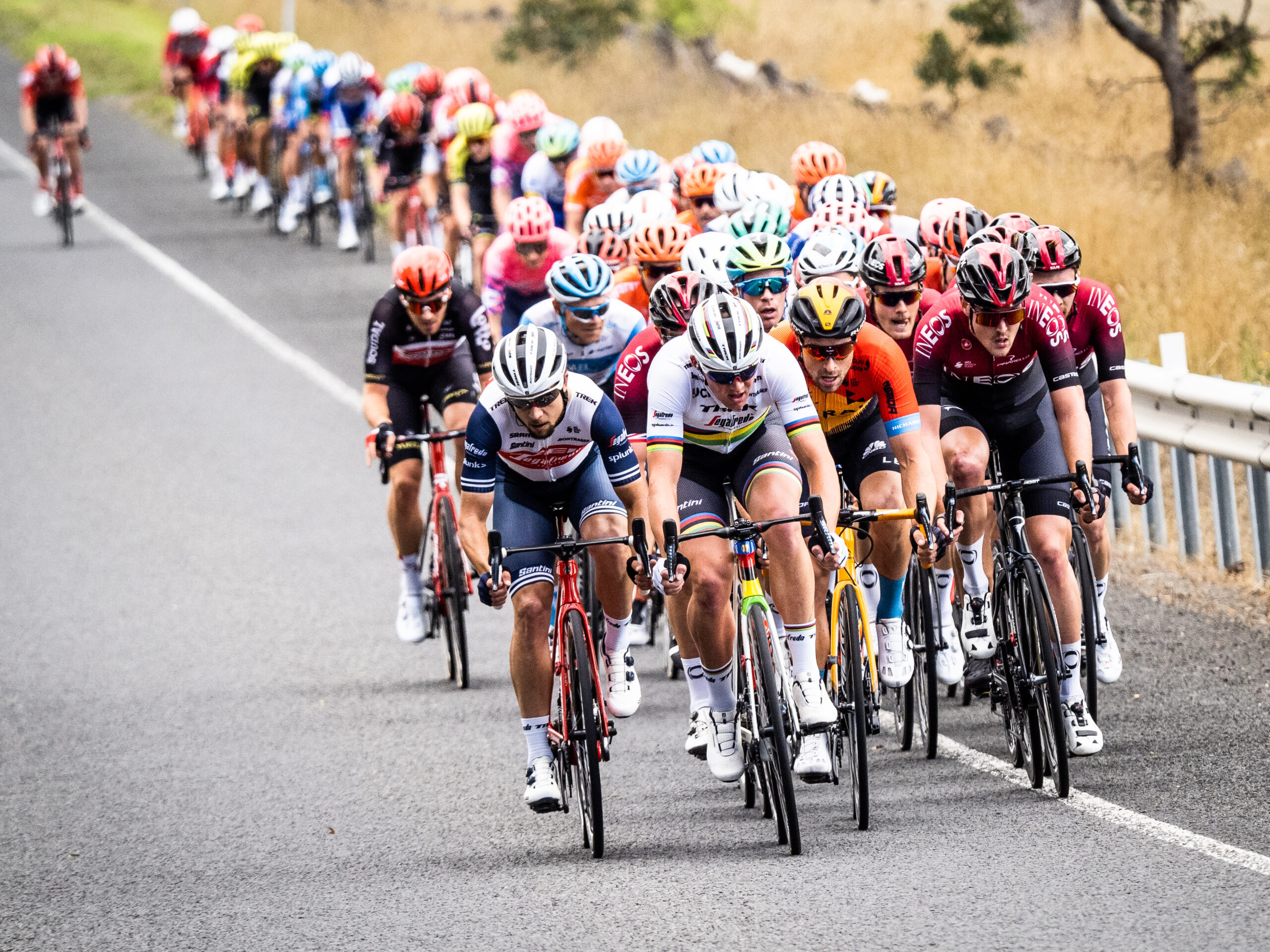As the world’s best cyclists hit Victoria’s shores this week, the outcome of the first one-day classic of the 2023 UCI WorldTour calendar remains an intriguing mystery for teams and fans alike.
In reversal of previous year’s courses, the UCI WorldTour Men’s Elite Race will see 98 riders across 14 teams complete a 176km loop around Geelong, the Bellarine Peninsula and the Surf Coast on Sunday.
On Saturday, 72 riders across 12 teams will contest the Deakin University Elite Women’s Race along a 143km route that offers an opportunity for glory for every type of rider.
READ: RACE FOR JERSEYS ON AS WE REVEAL THE BEST SPOTS TO CATCH THE ACTION
The new course, designed by Race Director Scott Sunderland in consultation with Cadel Evans himself, is set to be a treat for cycling fans, with the variable layout likely to yield unpredictable results.
“It’s a very open race,” Sunderland says.
“The Europeans especially, what they love about it, is that they come out a little bit underprepared while the Australians will be a little bit more race-fit after the Tour Down Under, the National Championships and Bay Crits.
“So it’s an even playing field, and that’s great for us because we see how the Europeans can compete.”
View this post on Instagram
It’s a sentiment shared by Dr Dan Dwyer, Senior Lecturer in Applied Sport Science at Deakin University.
“We can’t really rely upon our experience as the course is a bit different, and it’s run in the opposite direction this year – so it is wide open.”
Dr Dwyer, who was also previously a cycling sport physiologist at the Victorian Institute of Sport agreed that a number of scenarios could take place, from bunch sprints, to surprise attacks or even a breakaway victory.
“On balance I think it’s anyone’s race this year because I personally don’t know this is going to suit. I also heard that all the team directors are probably not telling their team with 100% certainty either, because no-one knows how this race is going to unfold.”
Without the extreme altitude or the marathon climbs that some European races exhibit, the 2023 Cadel Road Race course makes best use of the costal landscape, with its own obstacles to test rider fitness and team tactics in this early season hit-out.
However, a key feature is undoubtedly the punchy 830m-long ascent of Challambra, first made famous in the 2010 UCI Road World Championships. The men will complete the climb four times as part of their Geelong loop, while the women will scale it twice – once more than the previous edition in 2020.
Could the climb prove a pivotal moment in the race? Dr Dwyer explains some of the physiology involved in a rider that might benefit from the rise in gradient.
“It’s all about power to weight ratio,” Dr Dwyer said.
“All riders have a huge aerobic base, but it’s only the riders with the best power-to-weight ratio that will climb the most efficiently. So, it’s the lighter riders that are still quite powerful that are going to be competitive on a climb that steep.
“It might only be like a 20-50 meter break on a corner that short, but they can try and exploit across the top, through the back of Highton to get down into Queen’s Park and hopefully stay away on the last lap which will be exciting.”
View this post on Instagram
Secondly, echelons are expected, as the peloton traverses the picturesque but exposed Thirteenth Beach region before heading east to Barwon Heads and Ocean Grove. A strong team will be crucial in providing shelter and giving their leading riders the best chance for an overall race win.
“If you want a chance at a bunch sprint, you’ve got to remain protected from the wind,” Dr Dwyer explains.
“If you can save a lot of energy, hold the wheel nicely and stay in the right part of the pack without getting caught up in a potential crash, you can find yourself in good metabolic physiological condition right at a part of the race where you need to expend a huge amount of energy either on the breakaway, part of an attack or on Challambra or in that final sprint.”
CLICK HERE FOR 2023 ELITE MEN’S COURSE
CLICK HERE FOR 2023 DEAKIN UNIVERSITY ELITE WOMEN’S COURSE
With hot Australian summer temperatures predicted for the weekend, staying cool under pressure when it comes to a breakaway could prove difficult.
“The course is quite hilly at the start,” Sunderland explains.
“So I think it will open the race up earlier and it’s going to create some opportunities for the for the breakaways.
“Because we go through Barwon Heads and Ocean Grove very late in the race, if we’ve got the wind coming from the side and we get some echelons happening, we could see that a split in the peloton and even more drama.”
The run into the finish line on Geelong’s Waterfront also provides an intriguing scenario, as a potential bunch sprint will need to withstand the torture of Challambra, the descent, and a downhill run to the finish line.
“It’s actually deceiving, if you have a look at the profile, the last four kilometres is constantly downhill. As you come down past Eastern Beach Road and pass Deakin University waterfront, it’s downhill. If you get the timing right, it’s a very tactical sprint to the line.”
Dr Dwyer agrees.
“That straight to the finish line is so important. You’ve got to be well-supported and pull out just at the right moment.
“As always, it’s only the riders with the best skill, the best timing, the best ability to read what’s going on in those last 20 seconds that are successful.”
“We’ve got some great riders, great teams, and I expect a really exciting race.”
Tune into the women’s and men’s elite races broadcast on Seven and 7plus.
View this post on Instagram
